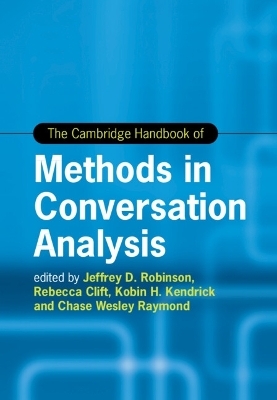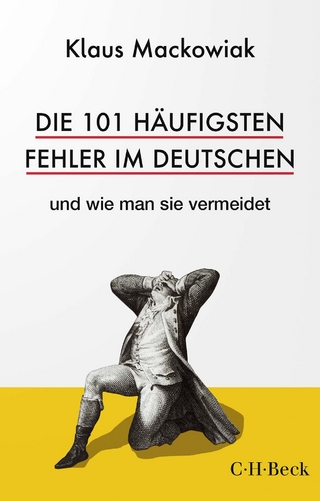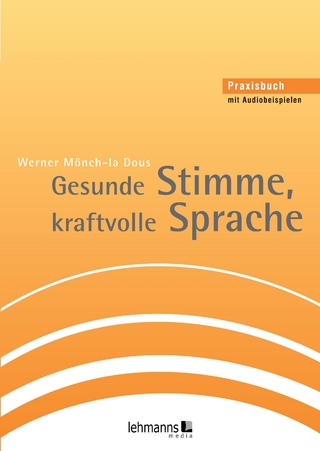
The Cambridge Handbook of Methods in Conversation Analysis
Cambridge University Press (Verlag)
978-1-108-83794-1 (ISBN)
Conversation Analysis (CA) is one of the predominant methods for the detailed study of human social interaction. Bringing together thirty-four chapters written by a team of world-renowned experts, this Handbook represents the first comprehensive overview of conversation-analytic methods. Topics include how to collect, manage, and transcribe data; how to explore data in search of possible phenomena; how to form and develop collections of phenomena; how to use different types of evidence to analyze data; how to code and quantify interaction; and how to apply, publish, and communicate findings to those who stand to benefit from them. Each method is introduced clearly and systematically, and examples of CA in different languages and cultures are included, to show how it can be applied in multiple settings. Comprehensive yet accessible, it is essential reading for researchers and advanced students in disciplines such as Linguistics, Sociology, Anthropology, Communication and Psychology.
Jeffrey D. Robinson is Professor in the Department of Communication at Portland State University. Rebecca Clift is Senior Lecturer in the Department of Language and Linguistics at the University of Essex. Kobin H. Kendrick is Senior Lecturer in the Department of Language and Linguistic Science at the University of York. Chase Wesley Raymond is Associate Professor in the Department of Linguistics at the University of Colorado, Boulder, and Associate Clinical Professor in the Department of Family Medicine at the University of Colorado, Anschutz School of Medicine.
Part I. Introduction: 1. Methods in conversation analysis Chase Wesley Raymond, Rebecca Clift, Kobin H. Kendrick and Jeffrey D. Robinson; Part II. Points of Departure: 2. Conversation-analytic methods of data collection Elliott M. Hoey and Joseph C. Webb; 3. Collecting interaction data in the 'lab' versus the 'field': rationale, ramifications, and recommendations Jeffrey D. Robinson; 4. Working with data I: field recordings Saul Albert and Emily Hofstetter; 5. Multimodal transcription as process and analysis: capturing the audible and visible Florence Oloff and Alexa Hepburn; 6. Discovering a candidate phenomenon Rebecca Clift and Jenny Mandelbaum; 7. Data Sessions Emma Betz; Part III. Collections: 8. Working with collections in conversation analysis Steven E. Clayman; 9. Working with data II: clips and collections Emily Hofstetter and Saul Albert; 10. History of a collection: repetition repairs Traci Walker; 11. Developing a collection: apologies Paul Drew; 12. Developing a collection: coordination of embodied conduct with darf/kann ich X? 'may/can I…?' in German Arnulf Deppermann and Alexandra Gubina; Part IV. Evidence: 13. Evidencing conversation-analytic claims: how participants orient to social action Chase Wesley Raymond and Jeffrey D. Robinson; 14. Evidence for claims about interactants' sense-making processes Anita M. Pomerantz; 15. Conversation analysis as a comparative methodology Paul Drew, Ana Cristina Ostermann and Chase Wesley Raymond; 16. The epistemics of epistemics: validating claims about epistemic stance in conversation analysis John Heritage; 17. Coding and statistically associating inter-action to advance conversation-analytic findings Jeffrey D. Robinson; Part V. Avenues into Action: 18. Single-case analysis Aug Nishizaka; 19. Ethnomethodology, conversation analysis, and the study of interaction in everyday life Douglas W. Maynard and Virginia Teas Gill; 20. Analyzing categorial phenomena in talk-in-interaction Kevin A. Whitehead, Geoffrey Raymond and Elizabeth Stokoe; 21. Where the action is: positioning matters in interaction Danielle Pillet-Shore; 22. Analyzing particles Galina B. Bolden; 23. Analyzing grammar in social interaction Barbara Fox, Elizabeth Couper-Kuhlen, Barbara A. Fox, Chase Wesley Raymond, Marja-Leena Sorjonen and Sandra A. Thompson; 24. Listening to talk-in-interaction: ways of observing speech Richard Ogden; 25. Multimodality in conversation analysis Lorenza Mondada; 26. System-oriented analysis: moving from singular practices to organizations of practice Kobin H. Kendrick; 27. Comparing across languages and cultures Makoto Hayashi and Stephanie Hyeri Kim; 28. Methodological considerations when using conversation analysis to investigate institutional interaction Merran Toerien; 29. Methods for 'applying' conversation analysis Rebecca K. Barnes; 30. Using conversation analytic research methods in the study of atypical populations Ray Wilkinson; Part VI. Situating and Reporting Findings: 31. CA across disciplines: connecting and engaging through publishing Rebecca Clift, Rod Gardner, Rose McCabe, Anssi Peräkylä and Jonathan Potter; 32. What do journal editors look for in publishing CA work? Charles Antaki, Leelo Keevallik and Elwys de Stefani; 33. Communicating findings to non-CA professionals Chloe Shaw; Part VII. Looking Forward: 34. Opening up avenues into action: future directions in conversation analysis Kobin H. Kendrick, Rebecca Clift, Chase Wesley Raymond and Jeffrey D. Robinson; Appendices: Appendix 1. Jeffersonian transcription conventions Rebecca Clift, Kobin H. Kendrick, Chase Wesley Raymond and Jeffrey D. Robinson; Appendix 2. Multimodal transcription conventions Lorenza Mondada.
| Erscheinungsdatum | 02.10.2024 |
|---|---|
| Reihe/Serie | Cambridge Handbooks in Language and Linguistics |
| Zusatzinfo | Worked examples or Exercises |
| Verlagsort | Cambridge |
| Sprache | englisch |
| Themenwelt | Geisteswissenschaften ► Sprach- / Literaturwissenschaft ► Sprachwissenschaft |
| Sozialwissenschaften ► Soziologie ► Empirische Sozialforschung | |
| ISBN-10 | 1-108-83794-8 / 1108837948 |
| ISBN-13 | 978-1-108-83794-1 / 9781108837941 |
| Zustand | Neuware |
| Informationen gemäß Produktsicherheitsverordnung (GPSR) | |
| Haben Sie eine Frage zum Produkt? |
aus dem Bereich


